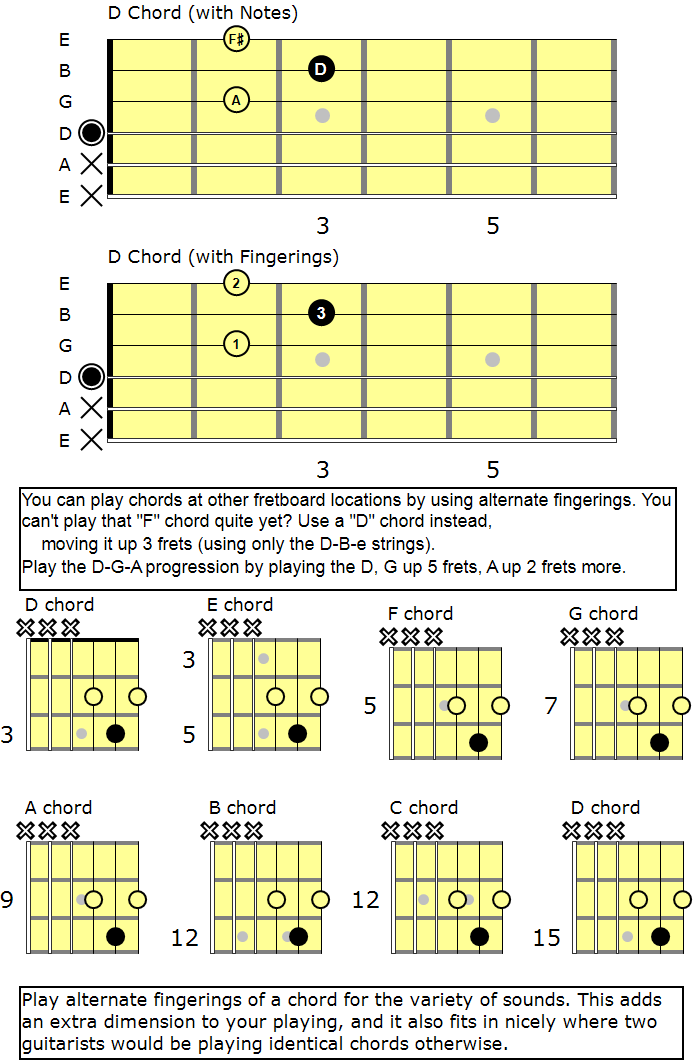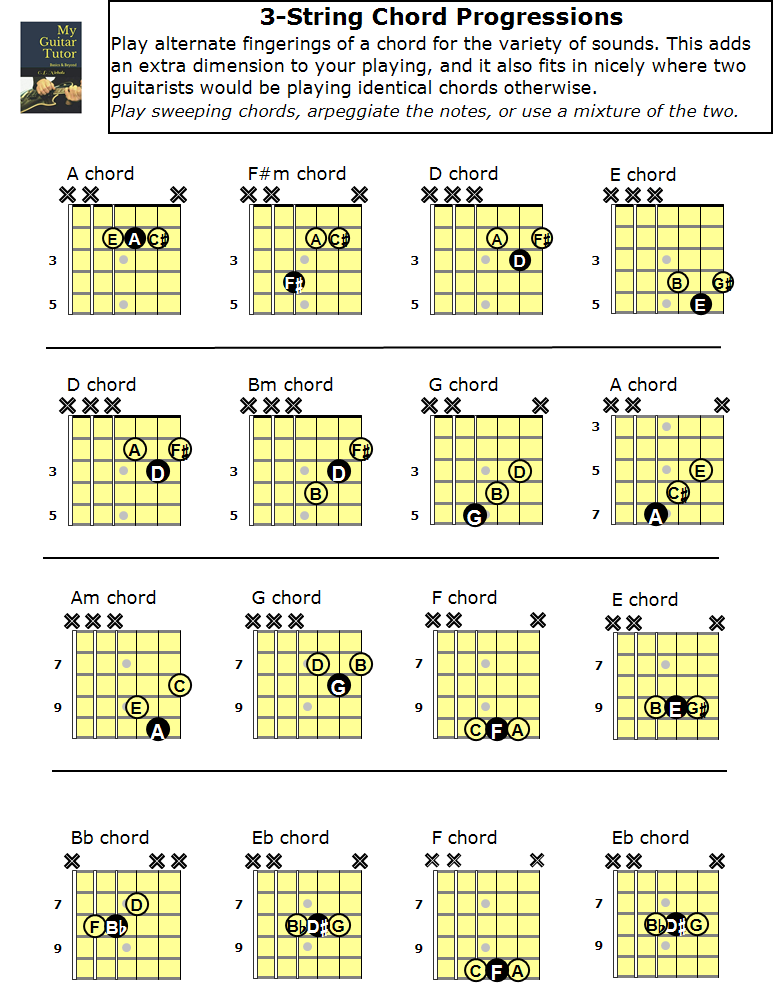Alternate Chordings Redux
There are many ways to play a chord. For variety or to play with other guitarists and not monotonously play the exact chord, choose from other chord voicings, playing an altogether different sound.
There are many ways to play a chord. For variety or to play with other guitarists and not monotonously play the exact chord, choose from other chord voicings, playing an altogether different sound. You can even play progressions by simply forming a pattern of that chord, then moving it up or down to form different chords.
Alternate Major Chordings
Alternate Minor Chordings
You can also play one partial chord (e.g. Triads) , then hold the shape as you move up and down to form a progression. Play the “A Major” partial chord, then move (or slide) that form up 5 frets to play “D major”, then up two more to play “E”.
< Drop the C# note on the B-string down one fret to the C note to play in minor chords.>
This “A” chord can be used as a one-finger chord progression. Simply hold your index finger across 3 strings at once (the D-G-B strings), & slide that finger to the chord you want to play next. It’s easy to play the I-IV-V-I (A-D-E-A) progression this way.
This is the same idea, using the D-Chord shape:
And here it is again, using the partial F-Chord shape:











